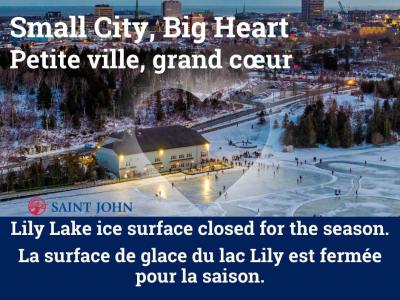What if you could do something good for your community and your planet just by choosing to do something good for yourself? Seems like a trick question! But when you choose active transportation, that's exactly what you’re doing. You benefit. Your city benefits. And so do future generations.
Active transportation is when you use your own power to get from one place to another. Walking, biking, skateboarding, in-line skating/rollerblading, jogging, running, non-mechanized wheel chairing, snowshoeing, and cross-country skiing—it’s any transportation that runs on you for fuel.
Active transportation is good for you because it gets you moving on a regular basis. You improve your fitness, which improves your overall health—including mental health. It’s also a pretty affordable way to get around, especially compared to driving, since there’s no gas or parking to buy. It’s good for your city because it reduces road congestion. Plus, everyone who chooses active transportation makes it more visible, which makes it an easier choice for others too. It’s good for the planet because active transportation reduces greenhouse gas emissions.
What do you need in order to choose active transportation? Not a lot. You might need a little gear. You need some initiative. And, you need a city that supports your decision—a community that builds and maintains the necessary infrastructure that makes active transportation safe, accessible, and easy.
Active transportation in Saint John
Saint John is working hard to build, maintain, and improve infrastructure that encourages more residents to choose active transportation options. All Saint John Transit buses are equipped with front-end bike racks, and there are conveniently-located bike racks throughout the Uptown core—you can usually park your bike right outside of where you want to be. There are 373 km of sidewalks throughout the City, plus Harbour Passage—a 4.7 km trail that rings the Saint John Harbour—is an important pedestrian link to connect the City’s North end with the Uptown.
There are two extensive bike routes in the City. The Campus Harbour Connection is a north-south route connecting Harbour Passage to the Hospital/University area. The Saint John portion of Trans Canada Trail (now the Great Trail) is an east-west route that stretches from Grand-Bay Westfield to Rothesay.
Most importantly, the City is building active transportation into all of its major planning initiatives.
The future of active transportation in Saint John
Three initiatives that promise to make active transportation an easier and safer choice for Saint Johners are called PlanSJ, MoveSJ, and the Central Peninsula Plan.
PlanSJ, the City’s Municipal Plan, aims to grow the City smarter by reinvesting in the Saint John’s urban core neighbourhoods, promoting denser, more complete suburban communities, and protecting our traditional rural character and landscape. This includes promoting greater choices for moving around the City and progressive environmental policies.
MoveSJ, Saint John’s transportation strategy, addresses the City's need to create a balanced transportation network, and to make public transit and active transportation more viable and desirable options. The purpose of MoveSJ is to plan for active, shared modes (cycling, walking) of transportation integrated with the City’s existing street and highway networks.
The Central Peninsula Secondary Plan provides direction for new development and reinvestment in the City’s Central Peninsula. It is intended to implement Plan SJ within the Uptown neighbourhoods and align with and respond to the City’s recreation, transportation, economic, and population growth strategies.
The Lord Beaverbrook Rink is a year-round facility for ice hockey, ball hockey, box lacrosse, and special events. Besides the ice surface, it features an indoor 200m walking track. The walking track and public skating are free to the public.
The rink has seating for upwards of 2,000 people, and is centrally located on Main Street in the City’s North End.
A nature park in the heart of Saint John, and a recreational jewel in the City’s crown. Located in the eastern area of the North End, Rockwood Park is one of Canada’s largest urban parks, at 890 hectares of forested hills, caves, and freshwater lakes. It was designed by Calvert Vaux, one of the designers of New York City's Central Park.
Rockwood Park is a City hub for outdoor activities and entertainment year round. Over 55 trails and footpaths will guide you through unspoiled wilds. The park features a golf course, camping sites, stables, wellness spa, and freshwater lakes for fishing, swimming, boating, and skating. A Stonehammer Geopark site, Rockwood’s billion years of history can be seen in unique rock formations, caves, and waterfalls. The park’s Interpretation Centre is the hub of information for all events taking place in the Park, trail maps, interpretive displays, and helpful staff. Make a day of it!
NOTE: While visitors may enjoy the extensive duck population that calls Rockwood Park home, it’s important that you do NOT feed them. Feeding the ducks leads to their becoming dependent on humans; delayed migration; malnutrition; overcrowding; and lake pollution due to increased levels of duck feces.
